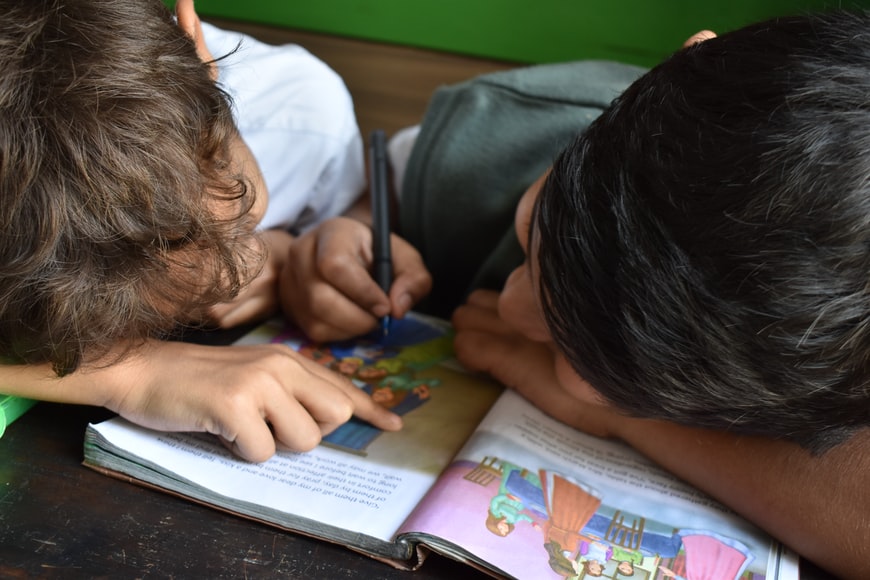Benefits Of Implementing Holistic Education As A Strategy In Schools
5 Mins Read
Published on: 27 September 2021
Last Updated on: 21 November 2024

toc impalement
Every parent wants the best for their children. From education to a quality lifestyle, parents go beyond their comfort zone to provide everything for their kids. When a kid reaches their early learning age, parents spend a lot of time deciding which school would be best for their kid.
They surf through various options and visit different schools to see and compare the learning environment that aligns best with their interest. Would you want your kid confined to academic learning only? We all know that as a parent our answer is a big NO.
We not only want our kids to excel in academics, but we also wish for them to be ready and prepared for life. So the question here is how the school can help your child prepare for practical life?
Preparing kids and teaching them beyond books plays an essential role in building their personalities and equipping them with life skills. School plays a vital role in such cases as it is the first learning spot for any child after their home.
Kids have to take a big leap from learning its and bits from their parents to communicating and socializing with their peers at school. Therefore, parents need to know how an education system can help children nurture. Considering parents’ interest in their children’s learning beyond core academics, many schools now offer holistic education to help kids learn beyond books and classrooms.
What Is Holistic Education?

The word holistic education entails the philosophy of educating the whole person beyond core academics. These concepts have lately become popular among people. To meet such demands, many schools are now teaching holistic education as part of their learning methodology.
The foundation of holistic education starts from preschool. Teachers at the preschool level impart learning and education that take into account a child’s natural background, abilities, and inherent personal characteristics. Since no two children have the same personalities or background, it is important to communicate with them in a personalized fashion. The best preschools set the correct foundations of holistic learning and education which are then carried on to higher levels of education.
It emphasizes on positive school environment and educators addressing a child’s emotional, social and psychological issues and helps them navigate through them. It also includes teaching students to reflect on their actions, their impact on a community and society as individuals, and how they can help build a better community.
If you want your child to experience holistic learning, international education in Singapore is all you need.
Benefits of Holistic Education

1. Improves Academic Achievement
The purpose of holistic education is to empower students to improve their educational outcomes like grades and gain the necessary life skills essential for professional life. Unfortunately, many students are under stress resulting due to the educational pressure upon them.
Often, students fail to concentrate in studies and may score low grades due to underlying stress or other emotional issues. Holistic education caters to the individual learning style and provides supportive learning environments. For example, a student can learn from eight proven learning styles through audio-visual aids or musical learning.
2. Enhances Mental And Emotional Well-Being
Children in their learning years have a lot to process. Apart from focusing on their studies and competing for grades, they are also influenced by the environment they live in and spend most of their time.
For example, do you think a child facing domestic violence or living in such a household can perform well in studies? As adults, we can lose focus and concentration resulting from such stress.
Then imagine what a child goes through? One of the fundamental aspects of holistic education is to focus on a child’s emotional and mental well-being. Teachers can play a vital role in helping students open up and share their issues to find a solution. The Learning Policy Institute states that a child’s brain capacity increases when they feel physically and emotionally safe and connected to others.
3. Promotes Self-Learning
Not every student is a quick learner. Some students may take seconds to process the information. In contrast, others may need hours or even a day to absorb the information imparted to them. However, when it comes to holistic education, it promotes self-learning among students.
It means that students get to learn and process information at their pace. Many educational experts believe that a student learns better through self-learning. It also helps teachers in their teaching methodologies. In addition, self-learning enhances a child’s self-esteem and confidence, increasing their passion and curiosity to learn more and beyond the books.
4. Helps in Connection Building
A conducive learning environment has a positive effect on students. Remember that students are still in their learning years. Their environment can either help them learn more or may diminish their interest in learning. A school is a place for children to learn, play, and make friends.
Children need to socialize with their peers and share information. Many teaching methodologies favor peer learning, allowing students to assess their peers’ work and help them learn from each other. Holistic education involves students communicating with each other and help them build connections.
5. Instills Problem-Solving Skills
Once students step out of their educational institutes and enter professional life, they face different hurdles, and their experience is entirely different. Students exposed to problem-solving tasks in their learning years tend to handle hurdles and challenges better than others.
Therefore, teachers should focus on guiding students and help them to solve problems on their own while in their classrooms. Doing so will enable a student for independently learning.
A child’s learning years and experience play a substantial role in shaping their personalities and react to difficult situations. Many might believe that implementing a holistic approach in education may consume time or not be productive, but it is.
Emphasizing the integrated learning concepts in teaching methodologies and adapting the whole-child teaching approach have proven to reduce the inequities. It has also improved their psychological well-being. Many educational institutes are trying to implement holistic education; however, it is still a domain ripe for exploration and its positive effects on children.
There might be some limitations like increased teaching time for teachers, but slowly and gradually, we can school a better learning place for our kids.
Read Also:


















Comments Are Closed For This Article